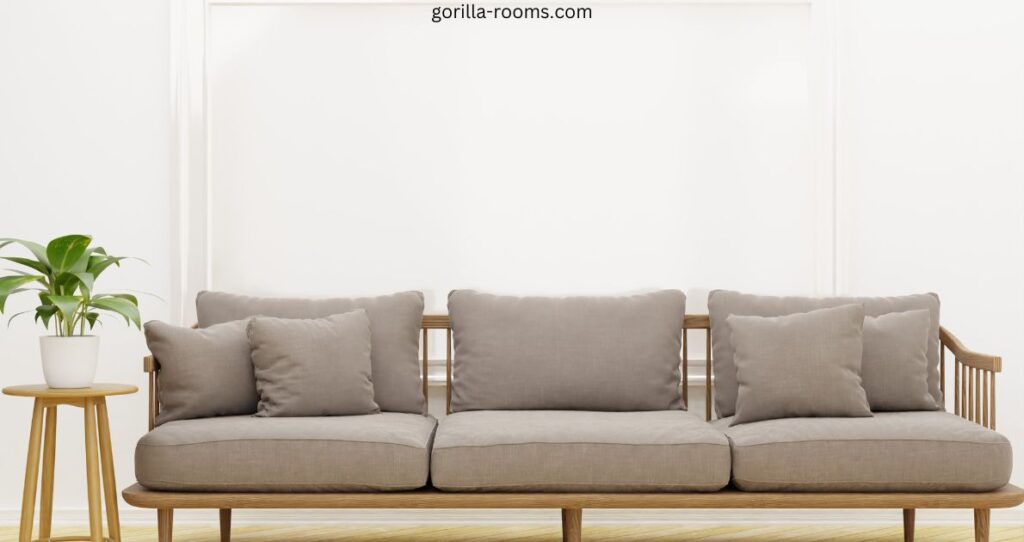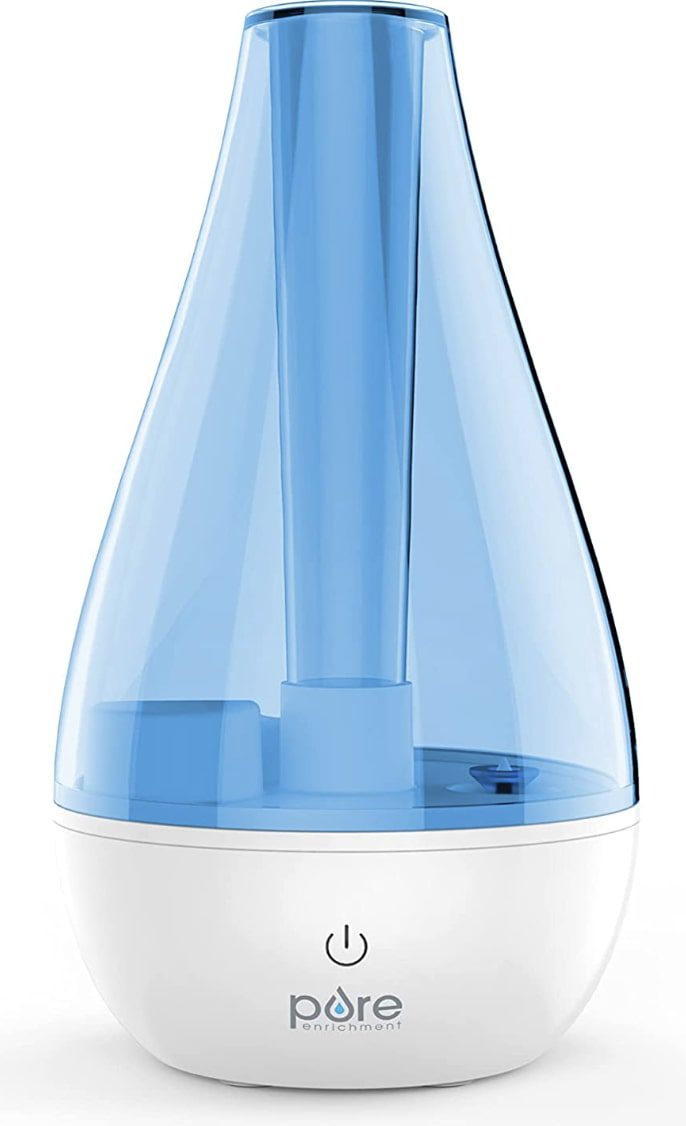Wool sofas are becoming more popular due to their luxurious feel, stunning appearance, comfort, and resilience.
Getting a new wool sofa that fits nicely with your living area is always thrilling. When you get the sofa at home and sit in the living room, it may not feel the same as at the showroom. You wish it to be as comfy and soft as possible.
But You feel a little itchiness…
Yes, wool can irritate some individuals if their skin is extra sensitive and prone to allergies. It can occur due to poor wool couch quality, scratchy coverings, or the pets on the couch.
Itching is usually harmful to you since it might result in skin problems, which can cause bumps or rashes.
Using a few methods and tips, you can make your sofa itch-free. And you need to act right away to prevent it from leading to serious skin issues.
What Makes Wool Material Itchy?
Wool fabric is made from the natural fibers of an animal’s fleece. If the wool is of poor quality, it itches.
As a basic rule, the itchiness of wool decrease with increasing strand diameter. Smaller strands of wool will feel softer.
Many wool companies employ inexpensive, thick-fibered wool to reduce the cost of their products, yet this wool often causes itching. Making the appropriate wool selection is crucial.
Pick a good different sort of wool if you’ve had wool-related itching and are asking how to make wool less irritating.
Purchasing inexpensive or synthetic wool goods might help you save a few bucks. Still, you’ll probably quit using them once you realize how unpleasant they are.
Studies show that lanolin, a naturally present coating on wool fibers, is most likely to cause wool allergies. Using wool-and-synthetics-mixed goods may also make people itch.
Less breathable than natural fibers, synthetic fabrics might increase sweat or cause rashes.
What Can Be Done To Make The Wool Sofa Less Itchy?

If you use these methods, wool will be less itchy:
1- Use A Fiber-smoothing Product
If your sofa’s wool fibers are itchy or have a few bumps, this might cause discomfort and itching. It is possible to smooth out the fibers and improve the softness of the couch by using a fiber-smoothing tool, such as a fabric groomer or lint roller.
2- Use Vinegar And Salt Solution
One of the best ways to make wool less itchy is using vinegar. The cloth becomes softer and more skin-friendly as a result.
- First, make a vinegar solution by combining the primary component and salt in equal amounts.
- To prepare a proper vinegar solution, you need 5 liters of cold water and 1 tsp of vinegar and salt.
- You should rinse a small towel, gently rub your wool sofa with that clothes, and let it for 30 minutes.
- Take another clean towel and soak it in water to remove the vinegar and salt solution from your sofa’s wool fabric.
- Vinegar has a strong smell, so cleaning your sofa properly is necessary. After that, apply, then leave the couch to dry under the sunlight and spray the couch cleaner for a better smell.
3- Steam The Wool Item
Steaming wool is another method for reducing its itchiness. Citric acid and a fabric steamer are required for this process. Citric acid will soften the cloth, and steam will increase that softening effect.
Sprinkle the citric acid solution on the wool couch and start the steaming process carefully on the wool surface.
To prevent the wool from stretching, steam dries it softly and lightly. Leave the couch under the fan.
4- Use Glycerin
Glycerin similarly softens wool as vinegar solution. The sole difference is that glycerin lacks vinegar’s overpowering odor. Utilizing a ratio of 1 teaspoon for 1 liter might be beneficial.
5- Use Baking Soda with Ammonia
If you’re looking for a way to make a sofa less itchy, mixing ammonia and baking soda can help. You’ll require 1 liter of water, one tsp of soda, and a few drops of ammonia. For an effective wool-softening solution, properly combine the elements.
Soak a piece of clothing in the mixture and gently rub it on your wool couch and let it be dry for a while. Then clean it with another wet towel and properly clean your couch’s fabric. After that, apply a fiber-smoothing product and leave the couch to dry under a fan.
What Types Of Wool Couches Are There?
There are several types of wool couches available, including:
1- Traditional Wool Couches
These couches are made with wool fabric or upholstery and are often characterized by their classic, traditional style.
2- Wool Blend Couches
These couches are made with a blend of wool and other fiber, such as polyester or cotton. They offer the warmth and durability of wool. Still, they may be more affordable and easier to care for than traditional wool couches.
3- Wool-wrapped Foam Couches
These couches are made with a foam core wrapped in a layer of wool fabric. They offer a softer, more comfortable seating experience than traditional wool couches.
4- Wool-wrapped Springs Couches
These couches are made with a spring core wrapped in a layer of wool fabric or upholstery. They offer a more supportive seating experience than traditional wool couches.
5- Wool Sectional Couches
These couches are made with wool fabric or upholstery. They are designed to be modular, with separate pieces that can be arranged to create a variety of seating configurations.
Wool couches are known for their durability, comfort, and classic style. They are often more expensive than couches made with other materials. Still, they can be a good investment as they tend to last longer and wear well over time.
Surprising Reasons Why Wool Sofa Cause Itching
There are a few potential reasons why a wool sofa might cause itching:
- Allergies: Some people may be allergic to wool, which can cause an allergic reaction and itching when they come into contact with it.
- Sensitive skin: Even if you’re not allergic to wool, you may have sensitive skin that reacts to the fibers. It can cause irritation and itching.
- Dry skin: If your skin is dry, it may be more prone to itching when in contact with wool. It is because wool fibers can absorb moisture from your skin, leading to irritation and dryness.
- Rough fibers: If the wool fibers on your sofa are rough or have a lot of bumps, this can cause irritation and itching as you come into contact with them.
- Improper cleaning: If your wool sofa hasn’t been properly cleaned or maintained, this can lead to a build-up of dirt, dust, and other irritants that can cause itching.
Suppose the issue is related to dry skin or rough fibers. In that case, you can try using a humidifier or a fiber-smoothing product to make the sofa more comfortable.
And if the issue is related to improper cleaning, vacuum and cleans your sofa to keep it free of irritants.
How To Prevent Wool Sofa From Itching
Here are a few steps you can take to prevent a wool sofa from causing itching:
1- Use a Humidifier
If you have dry air in your home, this can cause your skin to become dry and more prone to irritation.
Using a humidifier can help to add moisture to the air and keep your skin hydrated, which may help to reduce itching when you come into contact with your wool sofa.
Pure Enrichment MistAire Studio Ultrasonic Cool Mist

- SLEEK, COMPACT SIZE:
- 10-HOUR RUN TIME:
- NIGHT LIGHT & AUTO SHUT-Off
- 0.7L WATER TANK WITH 2 MIST SETTING OPTIONS
2- Keep The Sofa Clean
Regularly vacuuming and dusting your wool sofa can help to remove dirt, dust, and other irritants that can cause itching.
3- Use A Protective Cover
If you’re worried about coming into contact with the wool fibers on your sofa. In such a scenario, a protective cover might act as a shield between your skin and the fibers. It can help to reduce itching.
4- Wear Loose Clothing
If you’re prone to itching when you sit on your wool sofa, try wearing loose clothing that doesn’t come into direct contact with the fibers. It can help to reduce irritation and discomfort.
5- Use A Hypoallergenic Fabric Spray
If you’re allergic to wool, you can use a hypoallergenic fabric spray to reduce allergens on the sofa’s surface. It can help to minimize the likelihood of an allergic reaction and itching.
How To Make Your Wool Couch More Comfortable?
Here are a few tips for making your wool couch more comfortable:
- Add cushions or pillows- Adding extra cushions or pillows to your couch can help to increase the comfort level and support of the seating surface.
- Use a throw blanket- Adding a soft, cozy throw blanket to your couch can provide an extra layer of comfort and warmth.
- Consider adding a slipcover – If the upholstery on your couch is in poor condition or you just want to give it a fresh new look, you can consider adding a slipcover. Slipcovers can be made of various materials, including cotton, polyester, or wool. They can help to protect your couch and make it more comfortable to sit on.
- Use a protective cover- If you’re worried about coming into contact with the wool fibers on your couch, you can use a protective cover to create a barrier between your skin and the fibers. It can help to reduce irritation and discomfort.
- Consider replacing the cushions- If your couch’s cushions are worn or saggy, this can make the couch feel less comfortable. Replacing the cushions with new ones can help to improve the couch’s comfort level.
By following these tips, you can help make your wool couch more relaxed and pleasing.
Why Is Wool Considered The Best Fabric For The Sofa?
Wool sofas are more costly than those made of other fabrics because of their durability, comfort, and traditional design. Here are some of the pros of buying couches, sofas, and other seating made of wool.
1- Adaptability
Wool responds exceptionally well to practically all dyes, enabling it to be customized into any color.
Because of this versatility, you may be sure to discover wool in a color that complements your home’s decor.
2- Strength
Wool’s coiled fibers enable the material to restore its original shape. Wool resists being smoothed and toughened due to its inherent crimp, keeping your upholstery in its original shape.
Wool couches can resist the rigors of daily usage thanks to their natural resilience without losing any of their colors.
3- Easy-care
Dust and grime particles find it difficult to penetrate the wool’s exterior layer due to the fibers’ dense structure. As a result, these particles often settle on the surface, making cleaning considerably simpler.
Due to the fabric’s density, stains develop more slowly since spills have difficulty penetrating the inner layer.
4- Low Static Charge
Since wool has a naturally low static charge, your couch is less prone to collect dirt and dust.
5- Flame-retardant
Wool has a high nitrogen content and is inherently flame retardant because of these components. As a result, if the material comes into contact with or is near an open flame, it will be considerably more difficult to catch fire.
Wool doesn’t release any gases when it burns, which are the primary cause of death in home fires.
Conclusion
Couches are designed to make your life better daily. It must be well-maintained to ensure that the sofa lasts a long time and that you may rest on it.
If your wool couch is making you itch, it’s important to figure out why so you can take steps to fix the problem. If allergies or sensitive skin are the problems, you may need to shift to a different furniture material.
Your sofas are an investment, so ensure you enjoy your money’s worth!

